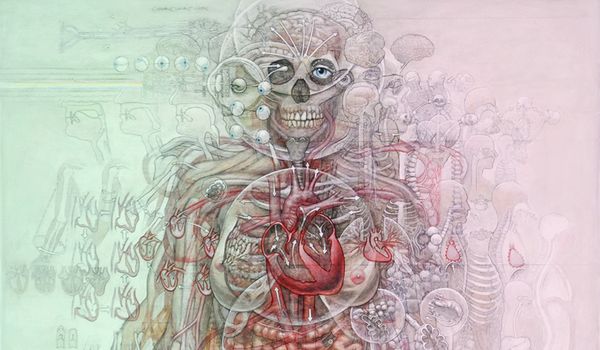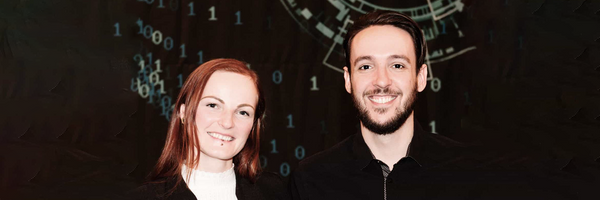Jordan Bates • • 14 min read
The Meeting of Science and Mysticism: A Mind-Melting Essay by Robert Anton Wilson
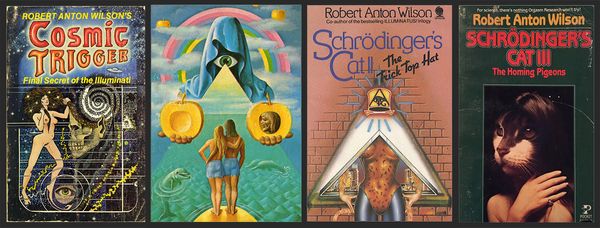
“I don’t believe anything, but I have many suspicions.”
— Robert Anton Wilson (1932-2007)
Robert Anton Wilson was something of a countercultural Gandalf, a white-haired wizard of skepticism and subversion. Wilson lived a remarkably diverse life, becoming, at various times, a novelist, essayist, philosopher, polymath, psychologist, editor, playwright, psychonaut, futurist, civil libertarian, Discordian Saint, and self-described agnostic mystic. A mouthful, I know—the man got shit done.
I recently discussed his marvelous book, Cosmic Trigger I, and realized while doing so that HighExistence really needs more Robert Anton Wilson in its archives. Iconic for being “agnostic about everything,” indefatigably curious, and prone to exploring Weirder territory than most other humans in history, Wilson’s ideas and escapades belong on this website as assuredly as octopi belong in the sea.
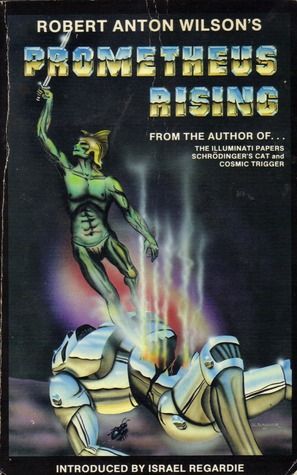
As such, today I’m honored to publish, in full, a fascinating essay written by Wilson himself. The topic of the essay is one which will surely interest many of you: the common ground between science and mysticism. Herein, Wilson discusses Bell’s Theorem, a set of mathematical ideas first published in 1964 that “staggered the scientific world.”
Bell’s Theorem, which remains salient to this day, suggested that the physical universe, especially at the quantum level, is far stranger than previously supposed. It also opened up the door for new connections to be made between science and mysticism—connections Robert Anton Wilson explores beautifully and clearly in this essay.
Without further ado, here’s Robert Anton Wilson, ready to show you just how wacky our reality really is.
The Meeting of Science and Mysticism
NEW THEORIES IN PHYSICS SUGGEST THAT “NO MAN IS AN ISLAND” AND “THE GREATEST IS WITHIN THE SMALLEST”
BY ROBERT ANTON WILSON
Originally published in Fate, May 1992
In 1964 Dr. John Stewart Bell, an Irishman working at CERN nuclear research centre (Switzerland) published a mathematical paper that staggered the scientific world. The central idea of the paper—now called Bell’s Theorem—suggested new views about reality so hair-raising that even Dr. Bell himself repudiates most of the interpretations by other physicists about what his mathematics imply.
Bell’s Theorem seems to portray a universe far weirder than science has previously realized—so weird, in fact, that it hauntingly resembles many “mystical” and “superstitious” ideas of the past. For instance, I shook hands with the editor of a Berlin magazine a month ago. Since our hands touched, according to Bell, some particles in my hand remain, and always will remain, in a kind or correlation or “union” with some particles in the editor’s hand. Mystics have talked about such linkages all through history, of course, but science never took such ideas seriously—until Bell came along.
Since so much dispute rages about Bell’s demonstration, we should use careful language in discussing it.
What Bell’s math showed was that 1) if we accept an objective universe separate from our ideas, and 2) if the equations of quantum (sub-atomic) physics accurately describe that universe, then 3) any two particles that once contacted each other continue to “influence” each other, or remain “parts of a unified system,” no matter how far apart they subsequently move in space or in time—even if they move to opposite ends of the universe.
Bell’s math thus suggests that space and time only exist on some levels of the universe—or only in our minds—or that we must assume a level of reality where space and time don’t exist at all. “Here is there,” says physicist Dr. Nick Herbert, when explaining Bell’s Theorem. “There is no difference between anything,” he adds with a twinkle in his eye.

THE BILLIARD TABLE EXAMPLE
To visualize what this means, and how it differs from all previous science, imagine an ordinary billiard table.
In Newtonian physics, if a ball (let’s call it B), moves, it’s because it is hit by another ball (which we can call A).This accords with the standard mechanical picture of the universe, which most people still identify with “science” with a capital S.
However, in field physics (pioneered in the 19th century by James Clerk Maxwell), ball B might move and ball A along with it, not because of mechanical collisions, but because a magnet below the table has created an electromagnetic field, which causes the balls to jump in a certain direction. Field theories, while in a sense less “materialistic” than mechanical collision theories, still involve connection, interaction and causality. They still live in “the same ball park” as mechanical theories.
In Einstein’s General Relativity, we find a third kind of causality. The balls might move because of the seeming flatness of the table, which we see, only appears on the small scale. On a larger scale the table actually curves. (In the Einstein universe the planets orbit the sun because space itself curves, even though we can’t see the curvature directly and have to deduce it mathematically.) This moves us even further from collision models than the field theories do, but Einstein remains in a ball park we can visualize—with a little extra effort. Einsteinian space-time involves connections, interaction and a kind of determinism-geometric determinism. The mass of matter determines the curvature of space, and the curvature of space determines the movement of matter.
In all these kinds of scientific explanations—the mechanical, the field theory and the geometric (curvature) Theory—the cause of the movement of the billiard balls can be pictured in a mental image and, once we understand the theory, it makes sense to us.
In Bell’s universe, however, ball A and ball B might moves without any of these three types of causes (the only types of causes science recognizes)—and perhaps without any cause at all! In other words, A moves because B moves or B moves because A moves and we seemingly cannot say anything more about the movements. Maybe we can’t even say that much since the word “because” doesn’t really seem to fit this case.
Imagine yourself in a room with such a billiard table. Ball A at one end of the table suddenly turns clockwise and exactly at that moment ball B at the other end turns counter-clockwise. You observe carefully that nobody pushed the balls or fired another ball at them. You check under the table and find no hidden magnets to create field effects. You then think of Einstein and geometry, but when you check, the table has no curvature of any sort. You look at the table again and ball A turns counter-clockwise while ball B turns clockwise. That sort of thing usually only happen in movies about haunted house.
SPOOKS, FLIM-FLAM OR…
At this point you would probably say, “spooks!” or something similar. James Randi would shout “Fraud!” or “Flim-flam!”
That’s just about what most physicists said when Bell’s Theorem was published. The math was absolutely irrefutable, but the conclusion seemed impossible to believe.
Several experiments, however—most notably, those by Dr. Clauser of the University of California at Berkeley and Dr Aspect at the optical institute in Orsay, France—have shown that atomic particles behave exactly as Bell said they should. For instance, in Aspect’s most recent experiment two photons (particles of light) ejected from a common source (a mercury atom) acted just as Bell predicted, or just like the billiard balls in our illustration. Whenever the photon manifested the mathematical state called “spin up,” the other photon measured “spin down.” This happened despite the total absence of any form of connection or cause known to science.
ANOTHER MODEL
To be even clear about how “mystical” this seems, let me paraphrase a life-size model once used by Dr. Bell in a lecture.
Imagine two men who live in Paris and Mexico City. Imagine that we keep them under observation continually and discover that every time the man in Paris wears red socks, the man in Mexico City wears blue socks. Now suppose we check every possible communication system and prove that no way exists for the two men to send messages to each other—they can’t get near a phone or shortwave radio or telegraph or any similar device. Then we take the red socks off the man in Paris and put blue socks on him. Immediately—with not a fraction of a second of time delay—the man in Mexico City sits down, takes off his blue socks and puts on red socks.
Even stranger, this would happen every single time we tried the experiment if the man behaved like the atomic particles in Bell’s Theorem and the experiments of Clauser and Aspect.
WHAT IT MEANS
What the deuce can this mean? Physicists remain in violent disagreement with each other about the question, but all the answers are equally astounding to ordinary folks.
According to Dr. David Bohm of the University of London, “It may mean that everything in the universe is in a kind of total rapport, so that whatever happens is related to everything else; or it may be that there is some kind of information that can travel faster than the speed of light: or it may mean that our concepts of space and time have to be modified in some way that we don’t now understand.” (London Times, February 20, 1983.)
A HOLISTIC UNIVERSE
Consider the first alternative. If “what happens is related to everything else,” we live in the kind of holistic Universe described by the mystics of the East, especially the Hindus and Buddhists. In the humorous metaphor of Charles Fort, if a bear coughs at the north pole, a bottle of Ketchup will fall out of a window in New York City. In the more grim metaphors of Buddhism, if a single angry or cruel act (or thought) occurs anywhere, every sentient being in the universe will feel the effects. In the poetic language of the Englishman, John Donne: No man is an island…if a clod of Spain be washed away, Europe is the less…Each man’s death diminishes me, for I am involved in humanity.
This “non-local connection” (as some call it) may mean that if you have touched a pair of dice your brain can then exercise some control over them, just as most gamblers think. This sounds like some wild, science-fiction elaboration of Bell, but it has been seriously proposed by Dr. Evan Harris Walker, an American physicist who deduced, from Bell’s math and the math of Heisenberg’s Uncertainty Principle*, just how the human brain should be able to affect the dice.
In The Complete Quantum Anthropologist, Dr. Walker demonstrates that this mathematically theoretical limit of control—“mind over matter”—corresponds exactly to the degree of control demonstrated by Hakoon Forwald, a retired electrical engineer, in a long-running series of experiments on “psychokinesis.” Forwald’s subjects in the years between 1949 and 1970 tried to influence dice by brain power and score just as far above chance as Walker’s math says they should have scored.
It does not seem far from this “psychokinesis” to the traditional belief that if a sorcerer gets a hold of a strand of your hair, anything he does will eventually affect your hair.
INFORMATION WITHOUT TRANSPORTATION
Before we get spooked too much by this line of thought, let us look at Dr. Bohm’s second alternative: “Information that can travel faster than the speed of light.”
Since no energy can travel faster than the speed of light, this means information without energy. Another physicist, Dr. Jack Sarfatti, has called it “information without transportation.” Such ghostly information moving around without energy or transportation to carry it might explain the kind of things that parapsychologists call telepathy or precognition or ESP.
This sounds as medieval as the sorcerer working magic on a lock of hair, doesn’t it? Nonetheless, two physicists from Stanford Research International (now SRI International), Dr. Harold Puthoff and Dr. Russell Targ, in their book Mind Reach, offer it as an explanation of “distant viewing” (telepathy across thousands of miles).
TIME TRAVEL
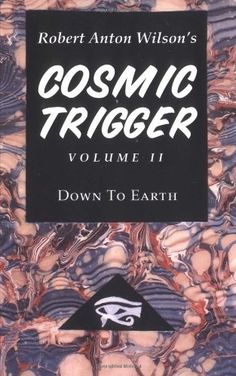
Even more bizarre, as Dr. Sarfatti has pointed out in many lectures, “information without transportation could travel into the past.“ You see, in Relativity Theory, going faster than the speed of light seems impossible because it means going backwards in time. Some interpretations of Bell, however, suggest that information can indeed go backwards in time. This leads to speculations that have previously only appeared in science fiction, not in science.
For instance, it leads to the “Grandfather paradox.” Thus: if I had a time machine, went back to the 1890’s, and for some perverse reason murdered my grandfather before he could marry my grandmother, then when I came back to 1992 I wouldn’t find myself here, would I? Where would I exist, if I existed at all? It seems from a theoretical mathematic basis I would dwell in a parallel universe—one in which I remained sane enough not to go back in time to kill my granddad. But this universe, where poor old granddad [resides], would still exist—except that my father and I wouldn’t live in it.
The same logic that governs such a sci-fi time machine applies to “information that moves faster than light.” If I could send Bell’s kind of information into the past, my grandfather might receive it. He might alter his actions in such a way that I wouldn’t get born in this universe anymore. I would have sent the information from the universe next door, so to speak.
If that doesn’t boggle your mind, consider a further development suggested by Dr. John Archibald Wheeler, often called the father of the Hydrogen bomb. In the Science Digest of October 1984, Dr. Wheeler suggests that the current and recent scientific experiments on atomic energy literally created this universe (or “selected” it out of all possible universes).
In other words, every time we meddle with an atomic system, according to Dr. Wheeler, the “non-local” effects go every which way into space and time, and some of them affect the nature of the Big Bang from which the universe emerged. You see, Dr. Wheeler has often argued that many, many universes emerged from the Big Bang—more than 10,000-million-million-million-million-million-million-million-million-million-million-million-million-million-million-million-million-million-million of them, at least—all of them stacked up in parallel to ours in “super-space,” a geometrical construct he invented to solve some of the problems with General Relativity. Dr. Wheeler now argues, in the light of Bell’s Theorem, that we have, through our experiments, “fine-tuned” the Big Bang to produce the kind of universe in which we can exist and can conduct such experiments. Zillions and Zillions of other universes, without our meddling, evolve in different ways, and most of them collapse inward again very shortly after the Big Bang and thus never produce human beings.
SPACE AND TIME MIGHT NOT EVEN EXIST
Then we have Dr. Bohm’s third alternative: “Our concepts of space and time will have to be modified in some way we do not understand.” Many philosophers have examined this idea in the past—especially the Buddhists in the East and Bishop Berkeley and Immanuel Kant in Europe. All come to the same conclusion, basically. Space and time don’t exist “out there,” apart from us. The human brain just invented them to have a filing system for its impressions.
Dr. Nick Herbert presents a scientific form of this theory in his book, Quantum Reality. According to Dr. Herbert, all experience remains “local” (bound by space and time) but reality itself exists “non-locally” (not bound by space and time, or “transcendental”) in exactly the sense of all mystic teachings.
Dr. Bohm states the same idea in a more precise way. As he sees it, the universe may consist of an implicate order much like the software (programs) of a computer and an explicate order, much like the hardware—what we can see and experience—has locality. It remains here, not there, and now, not then. The implicative order or software, however—which we cannot see or experience but only deduce from our experiments and math—has total non-locality. It exists both here and there, both now and then.
In this model we do not need to posit information without transportation or any of the spook stuff. The information does not travel without a medium because it does not travel at all; it exists already, always, everywhere. In every electron, in every atom, in every molecule, every stone, every animal or person, every planet, every galaxy, however different their locations in space and time, the basic information, or universal blueprint (Bohm’s implicate order), remains the same.
This sounds very much like the Hindu concept of God or the Chinese Tao. In fact Bohm’s implicate order exactly fits Lao-Tse’s paradox of the Tao: “The greatest is within the smallest.” It also strikingly resembles the major axiom of Hermetic mysticism in the West: “That which is above is reflected in that which is below.”
WHAT HAPPENS WHEN YOUR BACK IS TURNED?
There remains one way to avoid all of these shocking and bizarre sounding interpretations of John S. Bell’s discovery. That way is to deny the first step of the argument—that we can posit an objective universe separate from our ideas. This path, thus far, has appeared only in the works of Dr. David Mermin of Columbia University. In two astounding papers—“Quantum Mysteries for Everyone” and “ Is the Moon There When Nobody Looks?”—Dr. Mermin argues that quantum physics (the physics of small particles, from which Bell began) finally makes sense if we assume the universe only exists when we look at it. If you don’t look at your automobile, and nobody else looks at it, it ceases to exist until somebody looks at it again. Then it pops back into reality—presto!
This theory, known as “solipsism,” has never appealed to scientists or philosophers, although a few cynics have always argued in favor of it, just to annoy the orthodox. Nobody seems to have ever taken it seriously—until now. Dr. Mermin soberly claims that solipsism leads to less absurd results than any other way of interpreting Bell’s math.
I don’t think Dr. Mermin intends to make a joke. He truly finds solipsism less unthinkable than ghostly information moving every which way in space and time with no medium to carry it, or parallel universes being created out of nothing whenever an atomic measurement is made, or the other alternatives that physicists are considering in trying to understand Bell’s theorem.
SCIENCE AND MYSTICISM JOINED?
In summary, Bell’s theorem does not prove the truth of the basic ideas of mysticism, but it definitely makes them seem more plausible than any previous scientific discovery did. Any alternative explanation of the non-local reality described by Bell does not bring us safely home to “common sense.” The other explanations sound even stranger than anything that mystics have ever claimed. We can only conclude, as the great biologist J.B.S. Haldane did after experimenting with yoga, that “The universe may be, not only queerer than we think, but queerer than we can think.”
———
Further Study: Cosmic Trigger, Volume I: Final Secrets of the Illuminati by Robert Anton Wilson
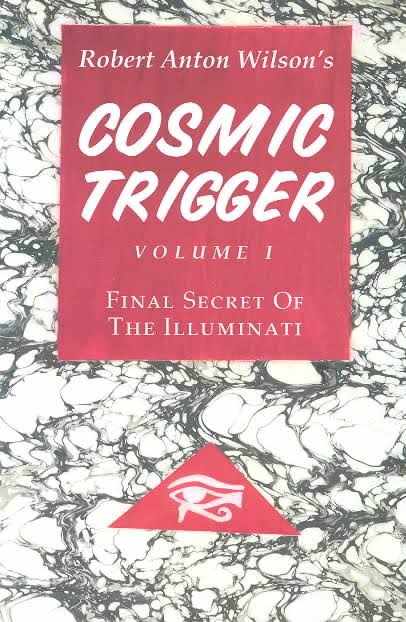
If you want to test whether your mind is truly open, this is the book to read. Don’t let the semi-satirical title fool you: This is a book written by one of the most skeptical philosophers who ever lived—a genius who just so happened to undergo one of the most uproarious journeys into the realm of the Weird ever recorded. This is a record of his peculiar travels. Robert Anton Wilson, though unknown to many, had a major influence on iconic figures such as George Carlin, Philip K. Dick, and Vinay Gupta. Wilson considered himself akin to an astronaut exploring the inner space of conscious experience, experimenting with a variety of methods of “deliberately induced brain change.”
For Wilson, agnostic mysticism was a kind of internal science—a way of “studying the nervous system directly by varying the parameters on which your nervous system functions.” In this spirit, Wilson conducted extensive experiments, using psychedelics, rituals, forms of meditation, and other means, and in the process encountered events and synchronicities that were truly Stranger Than Fiction. All the while, though, he remained skeptical of his experiences, never elevating any finding to the status of Absolute Truth. His stated life goal was to get as many people as possible into a state of “generalized agnosticism”—not just agnosticism about God, but agnosticism about everything. I’m not quite finished with this book, but it’s everything I dreamed and more; I was already a huge fan of Wilson’s work via YouTube, and this just took things to the next level. Read it, read it, read it.
“Since we all create our habitual reality-tunnels, either consciously and intelligently or unconsciously and mechanically, I prefer to create for each hour the happiest, funniest, and most romantic reality-tunnel consistent with the signals my brain apprehends. I feel sorry for people who persistently organize experience into sad, dreary and hopeless reality tunnels, and try to show them how to break the bad habit, but I don’t feel any masochistic duty to share their misery.”
— Robert Anton Wilson, Cosmic Trigger

Jordan Bates
Jordan Bates is a lover of God, father, leadership coach, heart healer, writer, artist, and long-time co-creator of HighExistence. — www.jordanbates.life






